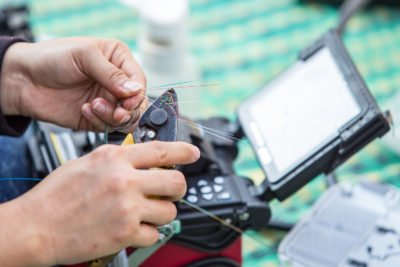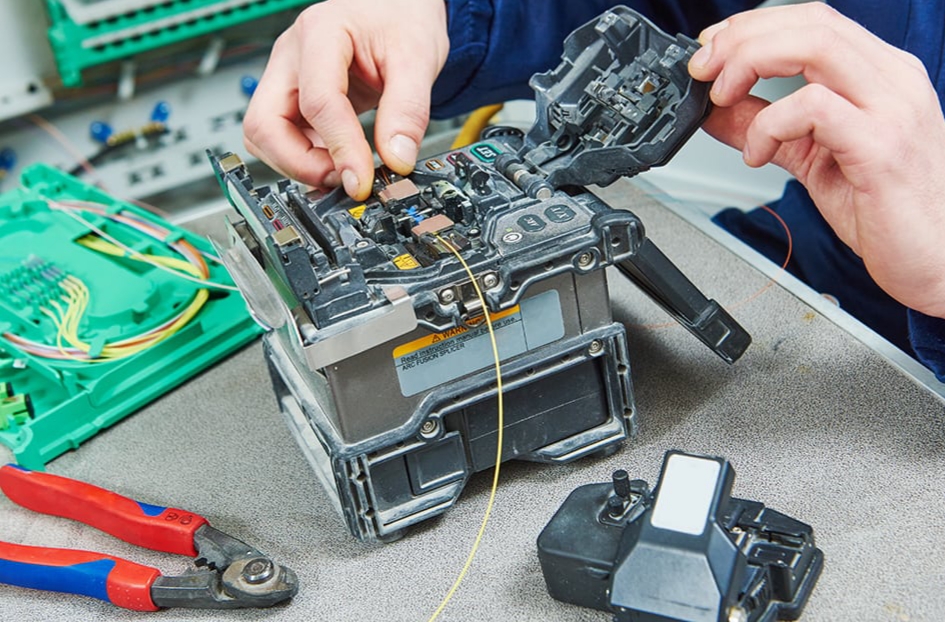Fiber optic splicing is an important method of joining two fiber optic cables together. It is a preferred solution when an available fiber optic cable is not sufficiently long enough for the required distance. Splicing is also designed to restore fiber optic cables when they are accidentally broken. Nowadays, fiber optic splicing is widely deployed in telecommunications, LAN (Local Area Network) and networking projects. Typically, fiber optic splices can be undertaken in two ways: fusion splices and mechanical splices. Americom specializes primarily in the higher quality more trusted, and requested fusion method.
Fusion Splicing Method
Fusion splicing is a permanent connection of two or more optical fibers by welding them together using an electronic arc. It is the most widely used method of splicing as it provides for the lowest loss, less reflectance, strongest and most reliable joint between two fibers. When adopting this method, fusion splicing machines are often used. Generally, there are four basic steps in fusion splicing process:
Step 1: strip the fiber
The splicing process begins with the preparation for both fibers ends to be fused. So you need to strip all protective coating, jackets, tubes, strength members and so on, just leaving the bare fiber showing. It is noted that the cables should be extremely clean.

Step 2: cleave the fiber
A good fiber cleaver is crucial to a successful fusion splice. The cleaver merely nicks the fiber and then pulls or flexes it to cause a clean break rather than cut the fiber. The cleave end-face should be perfectly flat and perpendicular to the axis of the fiber for a proper splice.
Step 3: fuse the fiber
When fusing the fiber, there are two important steps: aligning and melting. First of all, aligning the ends of the fiber within the fiber optic splicer. Once proper alignment is achieved, utilizing an electrical arc to melt the fibers to permanently welding the two fiber ends together.

Step 4: protect the fiber
A typical fusion splice has a tensile strength between 0.5 and 1.5 lbs and it is not easy to break during normal handling. However, it still requires protection from excessive bending and pulling forces. By using heat shrink tubing, silicone gel and/or mechanical crimp protectors will keep the splice protected from outside elements and breakage.





